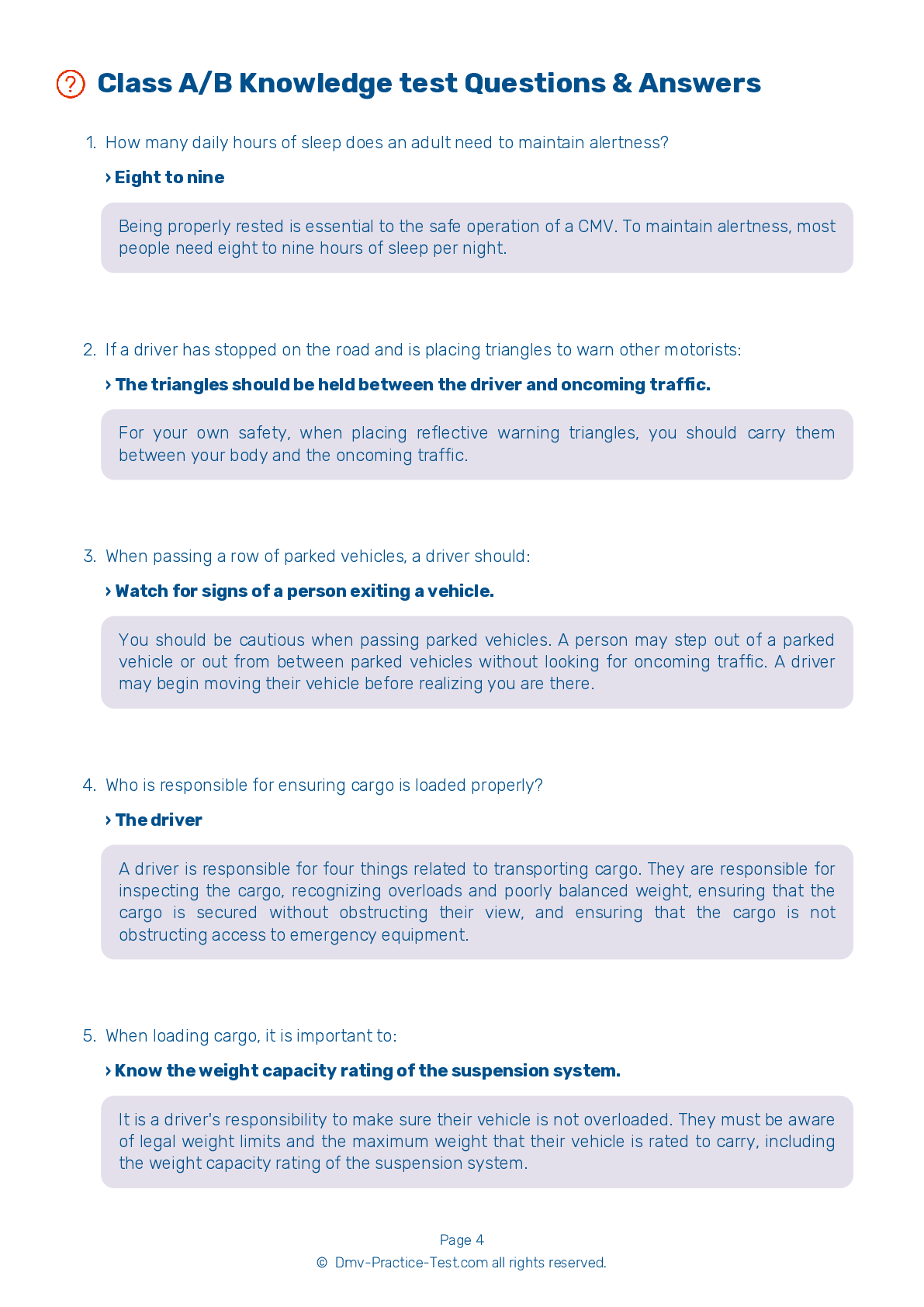Knowledge Test Class A #1
Class A Driving Test | Virginia 2025 #1 Page 5 of 7
Train for FREE online with our Virginia class A license test. The official exam test consists of several obligatory parts, with all of them checking your knowledge of different blocks of road rules. If you need to obtain a VA CDL class A permit in 2025, practice as much as possible. Free sample tests published on our website will help you check and improve your knowledge and boost your grades. Please bear in mind that CDL class A requirements may vary from state to state.
50
40
20
29 . On a curve, the posted speed limit:
The posted speed limit on a curve may be safe to be taken by cars, but can still be too fast to be taken by larger vehicles, such as trucks. An operator driving their truck at the posted limit on a curve could cause their vehicle to tip over.
30 . When starting a vehicle, warning lights and buzzers:
After starting a vehicle's engine, the warning lights and buzzers should turn on, then quickly turn off.
31 . Rims with welding repairs:
Wheels or rims that have had welding repairs should never be used.
32 . A low air pressure warning signal should activate:
When tank pressure falls below 5 psi.



